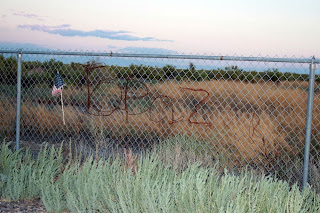Not to be over shadowed by the 150th anniversary
of the Civil War, the War of 1812 is commemorating its bicentennial, 2012-2015.
The War of 1812 is referred to as the forgotten war, despite its role in
shaping the political boundaries of North America and providing some of the
most iconic moments for the young American Nation trying to make its way in the
world.
Here are a few of those iconic moments to explore during the
200th anniversary of the War of 1812.
 |
| USS Constitution |
Old Iron Sides - The road to the War of 1812 was laid by the
impressment of American sailors into service for the British navy. The most
powerful naval force in the world, the British navy, would stop American
vessels and force any sailor with a British accent into service. Unacceptable
to America, this violation of civil freedom was a threat to national
sovereignty. As a result war was declared.
Some of the most memorable battles from this war took place on the high
seas, where the U.S. Navy took its place on the world stage with startling
victories. The USS Constitution earned the nickname Old Iron Sides for its
heroic actions during the war and remains one of the oldest active duty navy vessels
in the world. Because of this, the War of 1812 is credited as the birth of the
U.S. Navy.
 |
| Canadian Heroes of the War of 1812 Sir Isaac Brock, Tecumseh, Laura Secord, & Charles-Michel de Salaberry |
Given these historic events, Canada views and interpretations
of the history of the War of 1812 vary differently from the United States. North of the border, the War of 1812 is
viewed as a war for Canadian sovereignty and is an important part of their
national identity. Parks Canada protects many of the historic sites and
battlefields associated with the war. They also provide unique insights into
what the war means to Canadian people.
 |
| The Battle of New Orleans |
Old Hickory - Andrew Jackson – Long before he was famous for
being on the twenty-dollar bill, Andrew Jackson established his reputation as a
military and political leader during the War of 1812. Renowned for his hard fighting and hard
riding, he earned the nickname old hickory. Oddly enough, Andrew Jackson’s most
memorable moment during the war occurred after the signing of the peace treaty
on December 25, 1814. Fought on January 8, 1815, the last battle of the War of
1812 was the famed battle of New Orleans. This proved to be a major American
victory and would propel Andrew Jackson to the White House. The Battle of New
Orleans was later immortalized in song by folk singer Johnny Horton, and even
won a song of the year Grammy in 1959.
 |
| The Star Spangled Banner from on Display at the Smithsonian Museum |
The Star Spangled Banner - Perhaps the most memorable moment of
the War of 1812 was the writing of the Star Spangled Banner by Francis Scott
Key. Guarding the entrance to Baltimore Harbor, Fort McHenry was of strategic
importance and the key to capturing Baltimore, one of the larger cities in
America at the time. The British Navy unloaded on the fort with rockets red
glare. Despite their best efforts, the British were not able to take it and
eventually withdrew. But, not before providing the inspiration to France Scott
Key who penned the immortal words in a poem entitled, “The Defense of Fort McHenry”.
“ Oh say can you see…” and the rest as they say is history.
 |
| Fort McHenry |
Despite its less than spectacular end, and little fan fare,
the War of 1812 provided many iconic moments in American history that are worth
exploring during the bicentennial of this forgotten war.


















